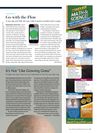Search
for
Sort by
Research
60-90 / 1000+ results
research Epithelial Stem Cells And Implications For Wound Repair
Different types of stem cells in hair follicles play unique roles in wound healing and hair growth, with some stem cells not originating from existing hair follicles but from non-hair follicle cells. WNT signaling and the Lhx2 factor are key in creating new hair follicles.

research The Human Hair Follicle, A Bistable Organ?
Human hair follicles switch between active and resting phases unpredictably.
research The Mexican Hairless Dog as a Model for Assessing the Comedolytic and Morphogenic Activity of Retinoids
Mexican hairless dogs can help test new skin treatments.

research The New Regenerative and Innovative Strategies in Hair Loss
New treatments for hair loss, including a compound called "ALRV5XR", platelet-rich plasma, and Adult Stem Cell-based therapy, are showing promise, but more trials are needed for confirmation.

research Dermal Papilla Cell-Derived Exosomes Promote Hair Follicle Regeneration During Wound Healing by Activating Wnt/Beta-Catenin Signaling Pathway
Tiny particles from skin cells can help grow new hair by activating a specific growth signal during skin healing.

research Targeting Receptor–Regulator Interactions
New treatments for cancer and skin disorders show promise in disrupting harmful cell interactions and promoting hair growth.

research Chaperones as Thermodynamic Sensors
New cancer treatments show promise in reducing tumor growth and improving skin regeneration in mice.

research Boosting Hair Follicle Regeneration
A protein called FGF9 helps regenerate hair follicles in mice after skin damage, and increasing FGF9 could potentially help human hair growth.

research Wound Healing and Skin Regeneration
Hair growth phase and certain genes can speed up wound healing, while an inflammatory mediator can slow down new hair growth after a wound. Understanding these factors can improve tissue regeneration during wound healing.

research dsRNA Released by Tissue Damage Activates TLR3 to Drive Skin Regeneration
Damage to skin releases dsRNA, which activates TLR3 and helps in skin and hair follicle regeneration.

research Dissecting the Microenvironment Around Biosynthetic Scaffolds in Murine Skin Wound Healing
Different scaffold patterns improve wound healing and immune response in mouse skin, with aligned patterns being particularly effective.

research Symmetry Breaking of Tissue Mechanics in Wound-Induced Hair Follicle Regeneration of Laboratory and Spiny Mice
Tissue stiffness affects hair follicle regeneration, and Twist1 is a key regulator.

research Androgenetic Alopecia: Combing the Hair Follicle Signaling Pathways for New Therapeutic Targets and More Effective Treatment Options
New treatments for hair loss may target specific pathways and generate new hair follicles.

research Major Improvement in Wound Healing Through Pharmacologic Mobilization of Stem Cells in Severely Diabetic Rats
A new therapy sped up wound healing and reduced scarring in diabetic rats.

research Mechanisms of Submucosal Gland Morphogenesis in the Airway
LEF1 is essential for the development of airway glands and is regulated by the Wnt/ß-catenin pathway.

research Hair Regeneration Under Stress
Mice can regrow hair on wounds due to specific cell interactions and mechanical forces not seen in rats.

research Hair Transplantation in Cicatricial Alopecias
Hair transplants can be a treatment for scarring hair loss if there's good blood flow and no active disease.

research Hair Regeneration and Rejuvenation: Pipeline of Medical and Technical Strategies
New treatments are needed for hair loss, and cell therapies might reverse hair thinning.

research Activating an Adaptive Immune Response from a Hydrogel Scaffold Imparts Regenerative Wound Healing
A special gel scaffold was made that speeds up wound healing and skin regeneration, even though it breaks down faster than expected.

research Safety and Biopsy Outcomes of a Topical Treatment (SM04554) for Male Androgenetic Alopecia: Results from a Phase 2, Multicenter, Randomized, Double-Blind, Vehicle-Controlled Trial
Topical treatment SM04554 safely promotes hair growth in male baldness.

research FGF9 for Baldness
Increasing the levels of a protein called FGF9 can promote hair growth, but humans may not respond the same way due to a lack of certain cells.

research Exosomes Derived From Mouse Vibrissa Dermal Papilla Cells Promote Hair Follicle Regeneration During Wound Healing By Activating Wnt/β-Catenin Signaling Pathway
Mouse cell exosomes help hair regrowth and wound healing by activating a specific signaling pathway.

research Pharmacological Mobilization and Recruitment of Bone Marrow Stem Cells Accelerates Diabetic Wound Healing in Rats with Diabetic Complications
Using a combination of AMD3100 and FK506 can speed up and improve wound healing in diabetic rats.
research Follicular Cell Implantation: Research Update on Hair Cloning
Hair cloning for hair loss is not yet a practical solution.

research Go With the Flow: Improving Storm Surge Predictions and Advances in Male-Pattern Baldness Treatment
New app improves storm surge predictions; advances in baldness treatment show potential but require time.

research It's Not Like Growing Grass
Blocking a compound called prostaglandin D₂ might help treat hair loss.

research Wnt-Dependent De Novo Hair Follicle Regeneration in Adult Mouse Skin After Wounding
Hair follicles can regrow in wounded adult mouse skin using a process like embryo development.
research Activating an Adaptive Immune Response from a Hydrogel Scaffold Imparts Regenerative Wound Healing
Hydrogel scaffolds can help wounds heal better and grow hair.

research Fibroblast Growth Factors: Key Players in Regeneration and Tissue Repair
Fibroblast Growth Factors (FGFs) are important for tissue repair and regeneration, influencing cell behavior and other factors involved in healing, and are crucial in processes like wound healing, bone repair, and hair growth.